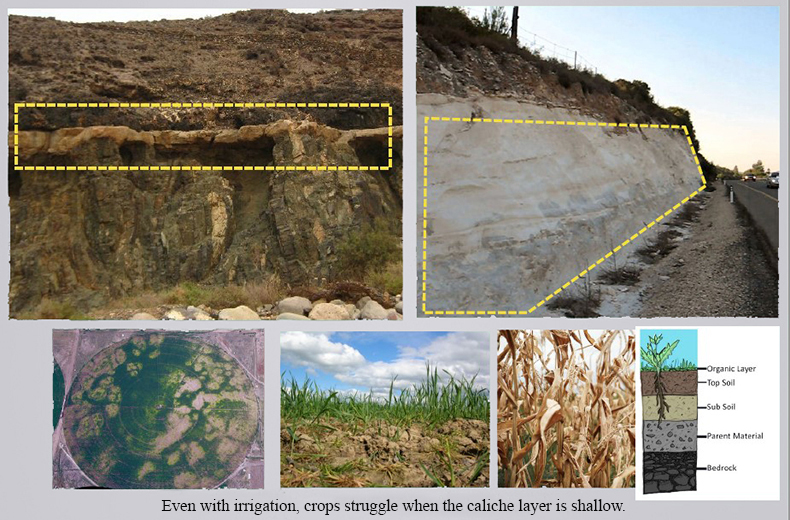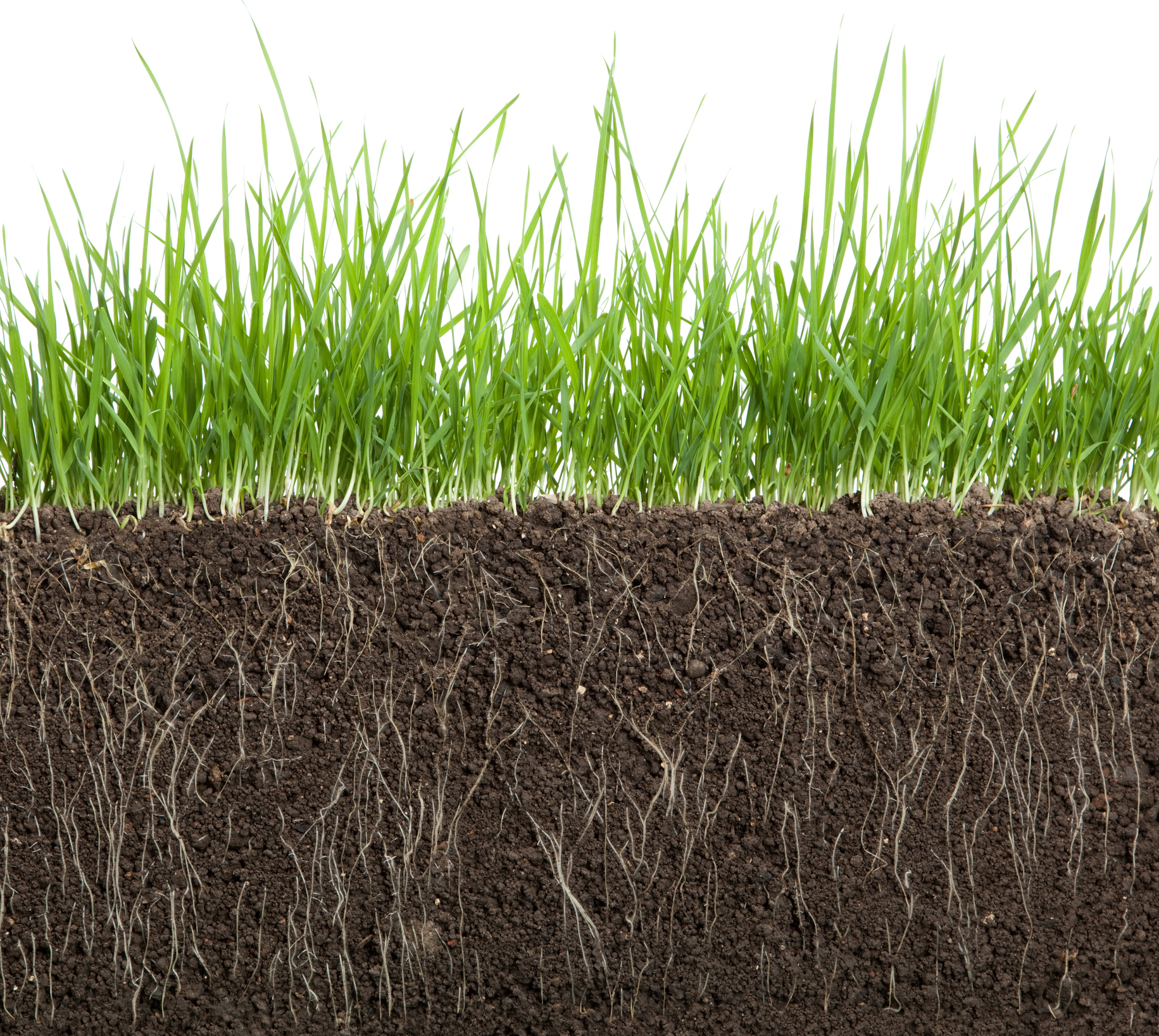Resource Material
Plant Growth and Root Development
Caliche
Caliche is a shallow layer of soil or sediment in which the particles have been cemented together by mineral matter. Also known as calcrete, hardpan, and duricrust, this layer is a common feature in arid or semiarid areas throughout the world. In the United States, caliche is a familiar deposit in many parts of the Southwest, especially Arizona, California, Nevada, New Mexico, and Texas. Caliche results from minerals precipitated in soils where evaporation exceeds precipitation, as found in arid regions. The cement is usually calcium carbonate; however, cements of magnesium carbonate, gypsum, silica, iron oxide, and a combination of these materials are known. In some locations there are multiple ancient caliche layers.
Caliche is often a challenge to agriculture. It interferes with proper soil drainage, the formation of plant roots, and it also can contain soluble minerals that are not beneficial to plants. The impermeable caliche prevents plant roots from penetrating to deeper soil layers, which limits the supply of nutrients, water, and space, making it difficult for the plants to develop normally.

The Plant Growth and Root Development project was brought to you by the Great Basin Rangelands Research Unit in Reno, NV.



